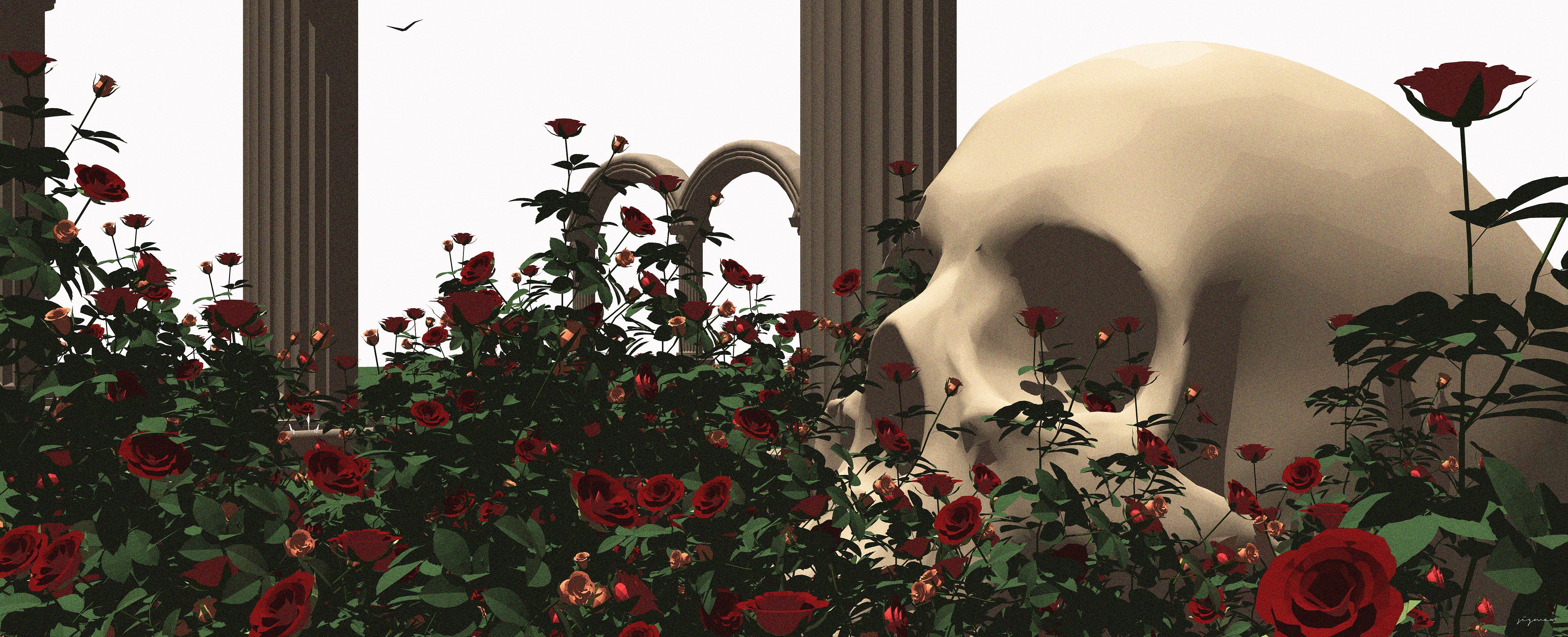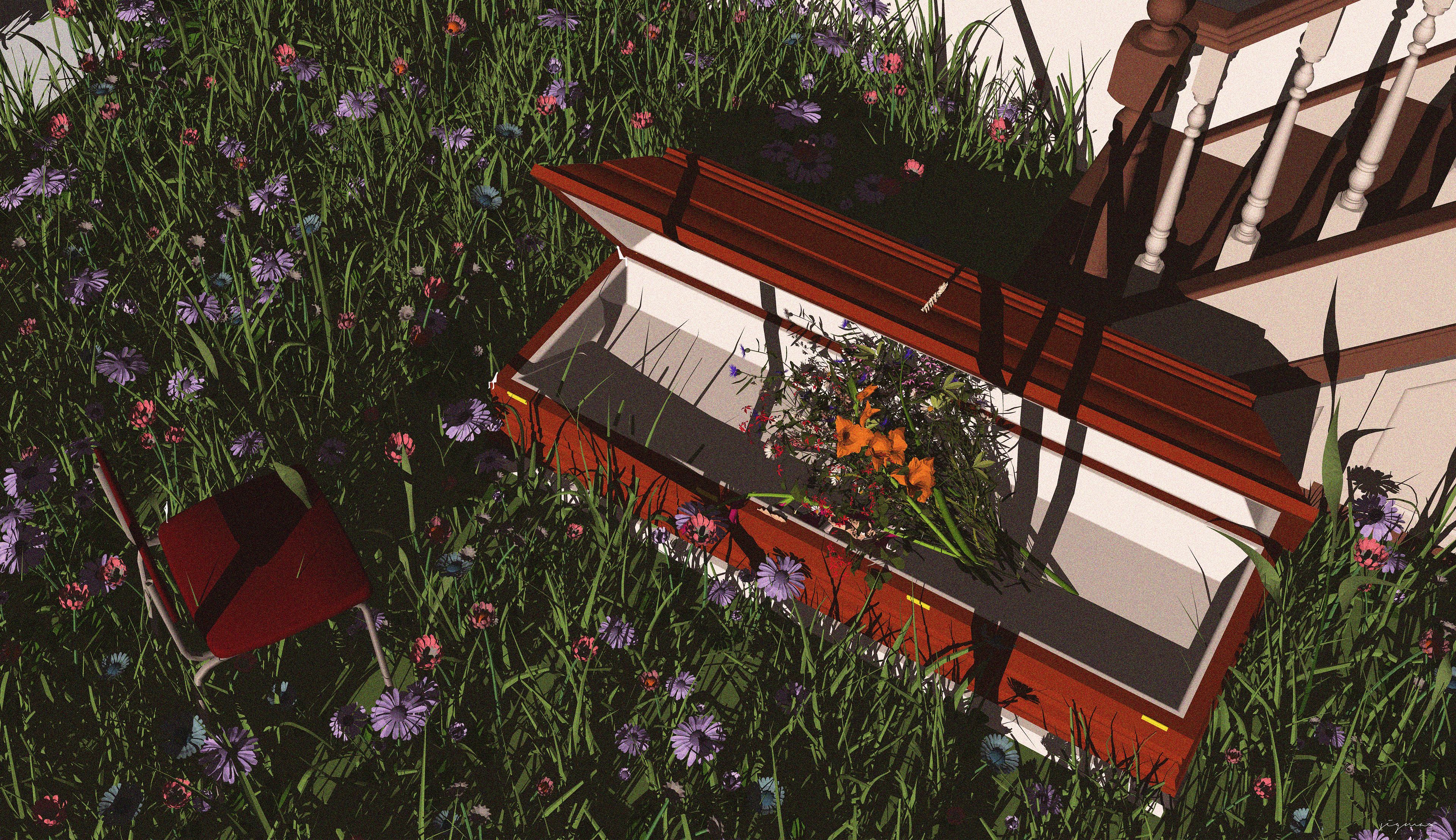In "Tempus Fugit, Rosa Manet," I sought to capture the eternal dialogue between life's impermanence and beauty's persistence. The human skull—bleached and bare—represents our inevitable mortality, a memento-mori amidst the vibrant red roses that climb and bloom with defiant vitality.
Time is our most precious currency, flowing ceaselessly like the subtle curves of the classical columns that frame this scene. These architectural elements speak to humanity's desperate quest for permanence—our civilizations rise and fall, yet we continue building monuments in hopes they might outlast us. The columns stand as testaments to human achievement while simultaneously reminding us of ancient ruins, civilizations reduced to fragments despite their grandeur.
The roses tell a different story. They bloom, wither, and return season after season, embodying nature's cyclical persistence against time's linear march. Their deep crimson hue against the skull's pallid surface creates a visual tension—life's vibrancy confronting death's stillness. This juxtaposition draws from Renaissance vanitas paintings, where symbols of mortality were placed alongside objects of beauty and pleasure.
I've stripped away excess detail in homage to minimalism, allowing these three fundamental elements—nature, architecture, and mortality—to speak their truth clearly. The composition exists in a liminal space, neither fully abstract nor strictly representational, encouraging contemplation of our brief existence against the backdrop of eternity.
The title itself carries dual meaning: time flies, yet the rose remains. We are temporary visitors in this world, but beauty and nature persist beyond our individual journeys. In creating this work, I invite viewers to reflect on their own relationship with time—how we spend it, what we build, and what truly remains when we are gone.

